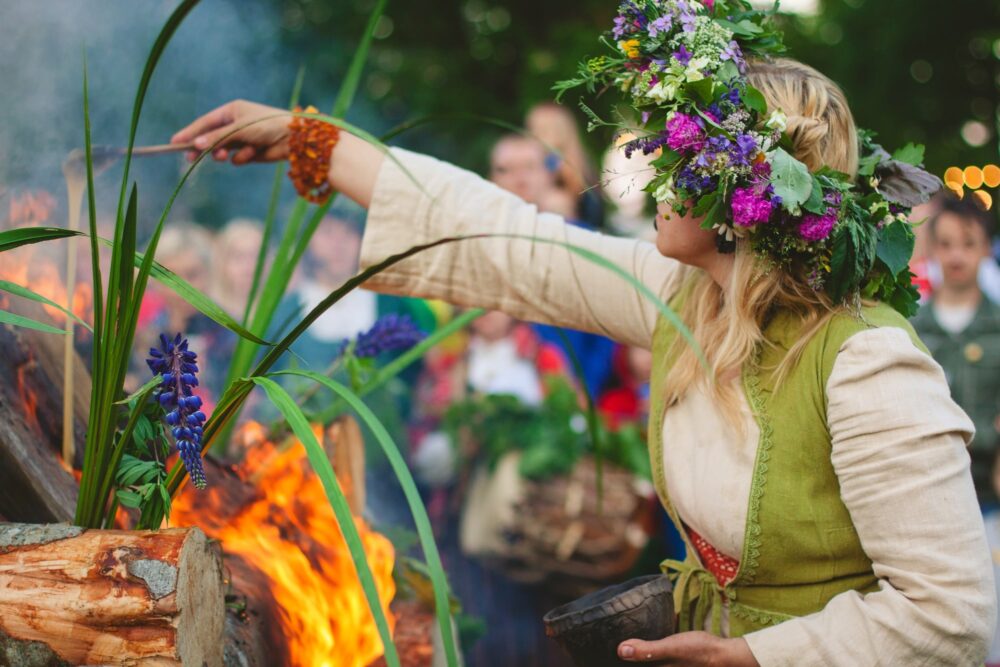Experience folklore, enjoy festivals
Latvians continue to observe the traditions of their ancestors — culture embedded in Latvian folklore that is best experienced during the Summer Solstice or Jani holiday, the impressive Song and Dance festival, as well as through traditional crafts and handiwork, events organized by museums, and many other activities.
Latvian culture and folklore are full of annual celebrations or gadskārtas. We celebrate the solstices, also known as Christmas and Easter, only according to Latvian traditions, the summer solstice as well, or Midsummer. Līgo, Midsummer’s Night Celebration or Jāņi is one of the celebrations’ richest traditions in Latvia. Every summer it is celebrated on June 23, marking the changing of the seasons; the onset of summer, when the days become shorter and the nights longer. This holiday is based on an ancient pagan celebration that took place between sowing grain and harvesting.
- Miķeļi or Miķeļdiena is the Latvian autumn solstice and the celebration of the fruitful part of the year.
- Mārtiņi or Mārtiņdiena is an ancient Latvian holiday welcoming winter when the time of pieguļa and shepherding came to an end.
- Meteņi or Metenis is an ancient Latvian spring waiting holiday that ends on Ash Wednesday and is followed by Lent. Meteņi is celebrated in February or early March, seven weeks before Easter.
- Jurģi or Ūsiņš Day is an ancient Latvian spring festival that coincides with the Christian church’s feast day in honor of Saint George on April 23. It signified the beginning of pieguļa and shepherding.
- Jēkabi marks the end of one phase of work and the beginning of another: By Jēkabi, the haymaking was finished, and the reaping of rye and barley had begun.
- Māra days are celebrated four times a year: Winter Māra or Candlemas Day (February 2); Spring Māra or Cabbage Mary (March 25); Summer or Great Māra (August 15) and Autumn Māra (September 8). Māra was considered the Mother of the World, so she was also often called the Mother of the Earth, the Mother of the Sea, the Mother of Water, the Mother of the Forest — and the Mother of Laundry. This deity symbolized the material world, the earth. Māra is the goddess of fertility and was believed to be responsible for fire, cows, and milk.
The carefully preserved traditions and the opportunities to experience them attract both locals and guests from all over the world to expand their understanding and knowledge. Whether it’s a celebration, returning to the past of several hundred years ago, learning about ancient culture or decorating yourself with the Lielvārde Belt, it is always a journey through time and Latvia’s culture and values.
Learn more about the culture and traditions in Latvia.
